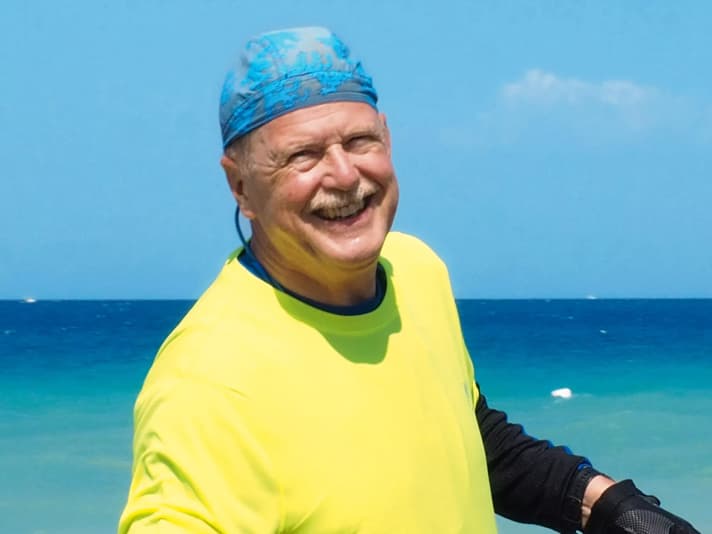Jibing camp: Jib properly at last - Martin Brandner relies on these methods
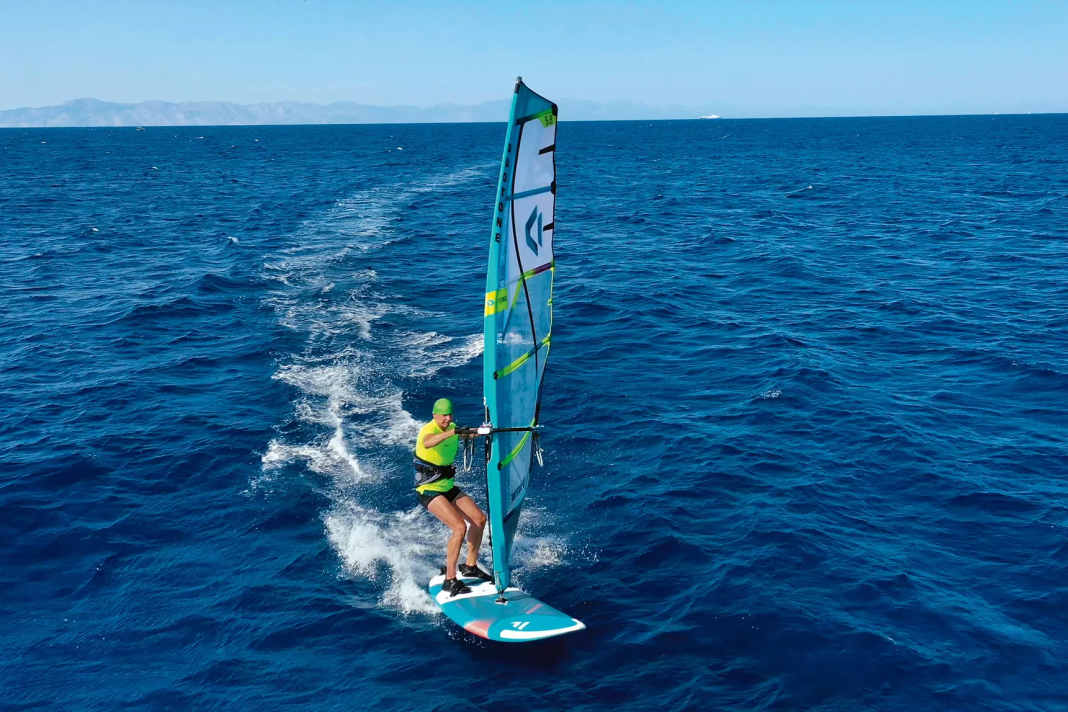





In this article:
Ever since my beginnings in the Windsurfing industry as F2 brand manager and then, when I founded JP with Jason Polakow in 1997 and managed it for 20 years, it kept going through my mind that it's actually sad how many windsurfers have been practising this fantastic sport for many years full of enthusiasm and excitement - but because they can't jibe properly, they can't actually enjoy the sport to its full extent. But the real fun of windsurfing only begins when the jibe has been completed. I've always found it amazing and admired these windsurfers for hanging in there for so long. For example, who would go snowboarding or skiing for years if they fell every second turn or just struggled round the corner?
As brand manager, I have tried to offer these windsurfers boards that make jibing or learning to jibe as easy as possible. With the Xantos line, we at F2 offered boards that were more orientated towards comfort than performance. The X-Cite Ride and Magic Ride series were also aimed at this customer group, who primarily want to have fun and simply jibe - and for whom maximum speed is not quite so important. As both F2 and JP were conceived as very sporty brands, it took good arguments to get the sales people excited about these boards. We first had to raise awareness among the magazines that not only top speed and suitability for a race or power jibe, but also for an easy jibe can be important for many windsurfers when testing boards. In any case, the board lines were a huge success and bestsellers in the respective product programmes.
The power jibe is still the key manoeuvre
After I left the windsurfing industry, my many trips gave me even more opportunity to observe people in many windsurfing centres and I realised again that this topic is as relevant as it was 30 years ago. When my old friend and former customer Jürgen Niens from the Pro Centre in Rhodes asked me if I would like to do a jibing seminar, the thought that I had when I left the industry came back to me: that I could give something back to windsurfing, which has given me so much, with a camp like this.
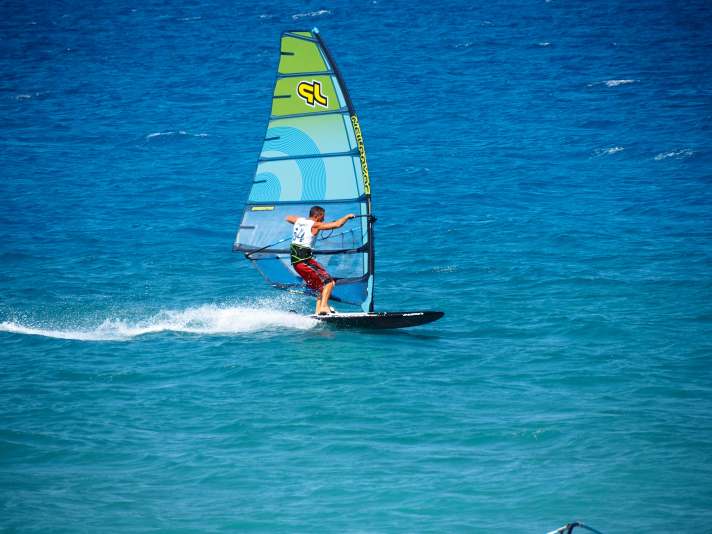
What does a jibing course have to include for the result to be right?
Now I had to look specifically at what could be done differently from conventional jibe courses to make learning the jibe easier. I realised that new approaches were needed to achieve success more quickly:
- a new type of jibing simulator for the beach
- Video instructions in which the jibe is broken down into small steps
- Mental training in which you mentally visualise the movement sequence of the jibe with all the individual steps
- Optimised video analysis using a drone
- Radios that can be used for individual training on the water
- a mini windsurfing simulator that you can use to explain the jibe at your desk
What should the perfect jibing simulator look like?
Firstly, I worked on a jibe simulator that would allow me to practise the most important steps of the jibe on the beach without ending up in the water every time I made a mistake. In contrast to previous simulators, most of which are very outdated, this new version should also allow the board to be edged up. I spent nights thinking about how such a thing could work and built three prototypes, in each of which I further developed the geometry. These prototypes were tested with a fire brigade tunnel fan, and I was then satisfied with prototype three.
At the same time, I re-edited existing jibing training videos and broke them down into individual steps. Based on this, I developed a mental training programme in which you imagine the jibing process with your eyes closed during dry training and thus internalise the individual steps.
I then developed a mini-simulator with a 3D printing company. With this unique tool, you can show exactly how the rig control and edge loading works - and can also make all the other physical aspects of windsurfing easy to understand. Of course, you can also use it to simulate the jibing process.
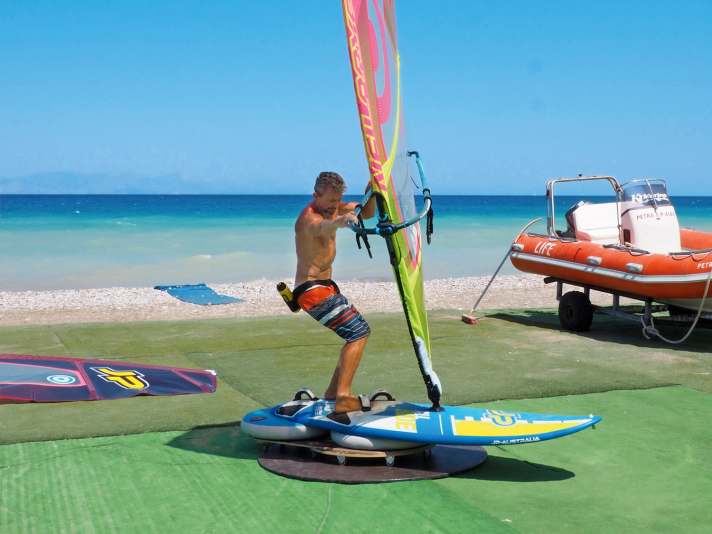
I also got myself waterproof radios from BbTalkin and then tested them extensively in practice. I am a certified drone pilot and have many hours of experience in filming windsurfers and editing videos.
All I needed was a hotel with a modern meeting room close to the water and a suitable tour operator. With the Blue Horizon Hotel in Rhodes and the Surf & Action Company I found the perfect partners for this. After Jürgen Niens suggested that I do such camps, it was clear that I would do it at his Pro Centre.
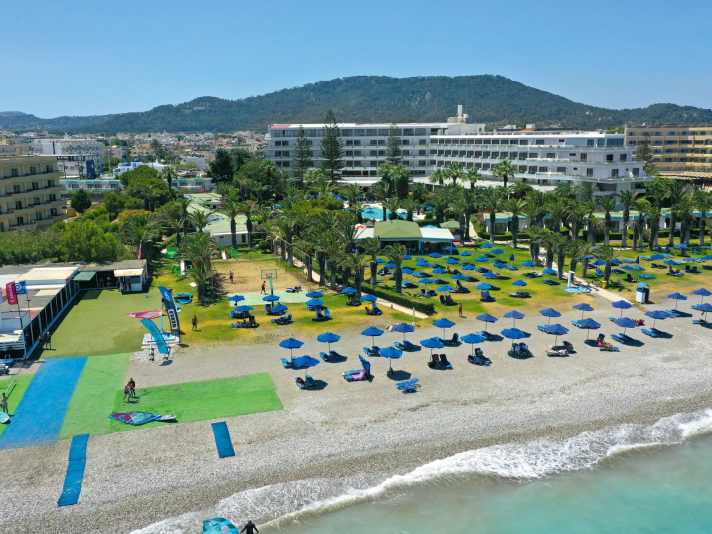
The jibing camp with Martin Brandner on Rhodes
First of all, I have to say that my main aim is for the participants to simply enjoy windsurfing even more as a result of the progress they make at the camp. Hopefully they will remain loyal to windsurfing and, through their enthusiasm, may even become ambassadors for windsurfing, infecting others with their enthusiasm.
On the day of arrival, there was a welcome drink in the evening on the balcony of the meeting room in the Blue Horizon, from where you can see the sea and the Pro Centre. Even then it was clear that it was going to be a really nice week, as all the participants got on really well and you could immediately sense a good group dynamic. The first day began with a round of introductions and an initial theory session, in which we discussed the basic requirements for learning to jibe quickly after a bit of material knowledge.
At the beginning there was a material check and video training
After an equipment check, during which everything was trimmed accordingly, we went surfing in - and I was able to get an impression of the group's riding skills. We then went back to the meeting room, where we watched my special video in which the jibe is broken down into 18 steps.
This video was then also used to practise the jibe in a kind of dry training of the movement sequence - and then also for mental training, in which the jibe is practised with closed eyes in the dry to internalise the movement sequences.
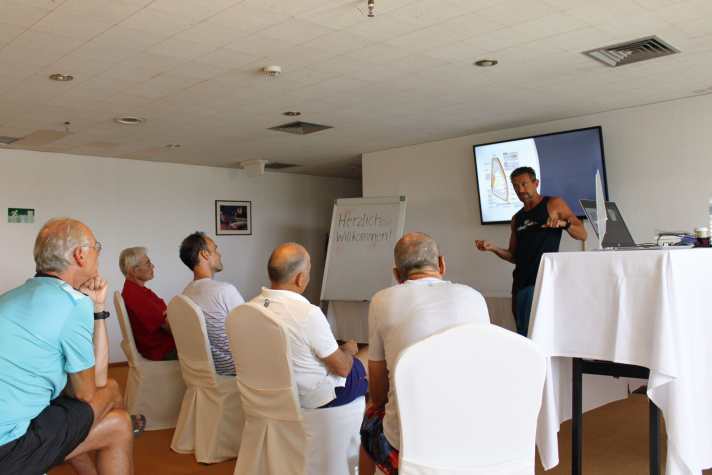
Then it was back on the water and everyone was filmed jibing with the drone or from land. The recordings were later analysed in small groups.
Jibe simulator, mental training, meeting, video check...
On the second day, we went in small groups to the jibing simulator to put into practice and spiritualise what we had seen in the training video and practised during the mental training. The gybing simulator is used to practise all the individual steps from the start, including rig control and edge loading, to the foot change, the sail shifts, the recovery and picking up speed.
This went on all week. Watching jibing videos again and again, dry and mental training in the meeting room, simulator training, video recordings and analyses.
In between, there were videos showing the most common jibing mistakes and we discussed in detail the easiest way to avoid or correct these mistakes. This was a real eye-opener for most of the participants, as the same mistakes are actually made again and again when learning to jibe.
Individual training was available for interested participants
For some participants who were interested, there were also individual training sessions where I was connected to the people on the water via radio. This was very well received and helps especially when it comes to optimising the timing of the jibe - and is always a very special experience, as you don't have to shout on the water, but can talk to each other normally while surfing.
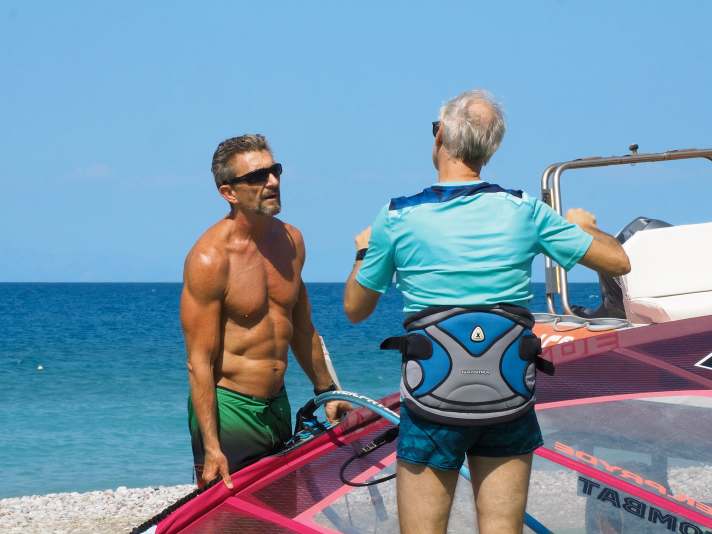
In between, we also practised the correct position for speed surfing on the simulator. Many participants often think that it's not necessarily about being super fast - the main thing is to have fun. I'm more of the opinion that if you're well powered up but not overpowered, the best and fastest body and rigging position is also the most relaxed and comfortable.
During the week, all participants received the training videos and their personal videos on a USB stick so that they could analyse their own videos before going to sleep.
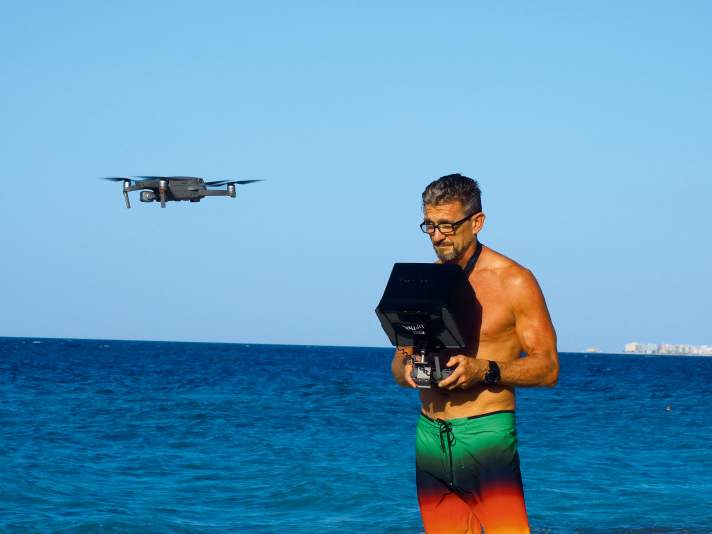
Muscle training was also on the programme
There was also a core fitness training session. Here I showed the participants special abdominal and core muscle exercises that are important for windsurfing and are designed to prevent back problems, which are very common among windsurfers. I also did a training session for the leg and upper body muscles, which are important for windsurfing, and an extensive stretching session. These exercises showed how you can have even more fun windsurfing through better fitness and flexibility - and how to prevent possible injuries or problems.
So nobody was bored at the camp, as the programme was quite tight. Of course, as you would expect after a good day's surfing, we often (or actually always) had a beer on the beach at the legendary Rhodes sunset. In the evening, we all ate together in a typical Greek atmosphere. During the sundowner and the meal, I told one or two anecdotes from my almost 30 years in the windsurfing industry.
The whole camp was captured on film by a young photographer. On the last evening there was a best-of of the windsurfing videos from all the participants and a picture show with the best shots of the week. It was clear that everyone had made good progress and had a lot of fun.
The farewell dinner marked the end of a really cool week. Although the participants came from a wide variety of professional and age groups, there was a great group feeling and we are all still connected via a WhatsApp group to this day. For me, this camp once again made it impressively clear what a special breed of people windsurfers are, as you simply need a lot of stamina and a great love of the sport to learn it - that's what unites us. At the end of the day, we are all somehow similar types.
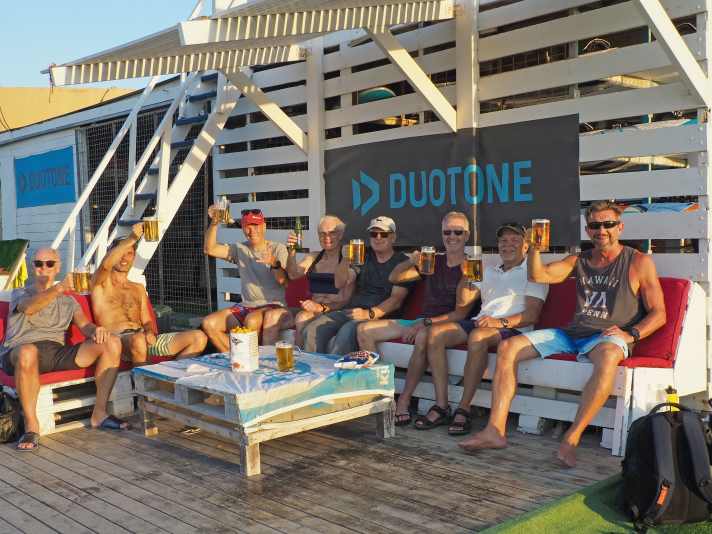
A full package for the pupils
The participants received all the training videos, their video recordings and photos taken during the camp and videos of the fitness and stretching sessions on their USP stick.
Every professional wave rider is always on the lookout for the perfect wave. Every skier or snowboarder, no matter how good, is always looking for the perfect turn. As no two windsurfing spots are the same, and no two days - even in the same spot - are the same, many windsurfers are always on the lookout for the perfect jibe in all conditions - and you learn something new every day. That's why windsurfing never gets boring, even after many years.
Dates for the jibe camp 2023
I currently have two camps planned for 2023 at the Pro Center on Rhodes (4-11 June and 3-10 September) and talks are currently underway for two to three more camps between autumn 2023 and spring 2024 in suitable destinations. All information and dates can be found as soon as they are finalised at Surf & Action .
What the participants say:
"The dry run with the constant repetition of the individual steps and their timing helped me a lot. Now I have all the tools and can keep practising, practising, practising." Matthias Köhne
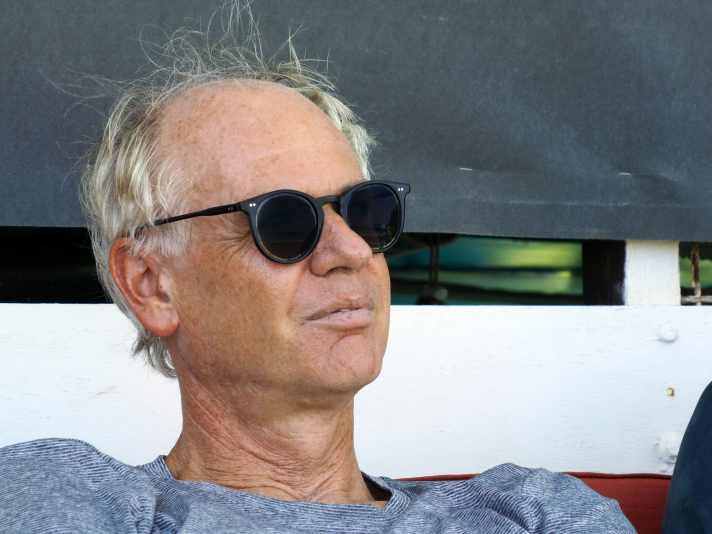
"I haven't been on the water much in recent years. That's why the step-by-step approach to jibing with instructional videos helped me a lot." Thomas Zaug
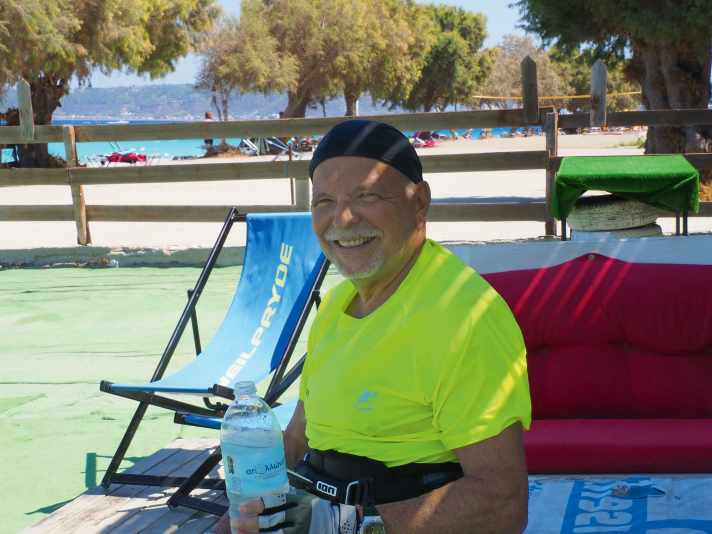
"We also had a lot of fun after the learning sessions and always spent the evenings together." Michael Bertignol
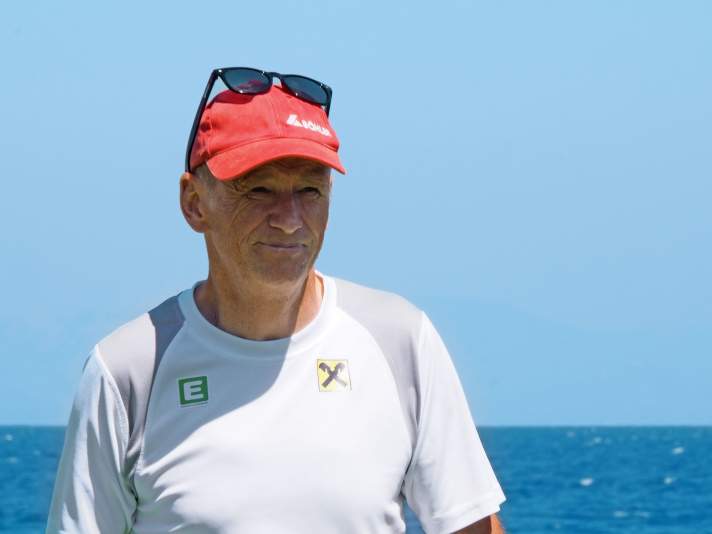
"The difference to all other camps was that Martin really looked after each participant meticulously. He specifically addressed the problems of each individual." Achim Leppla
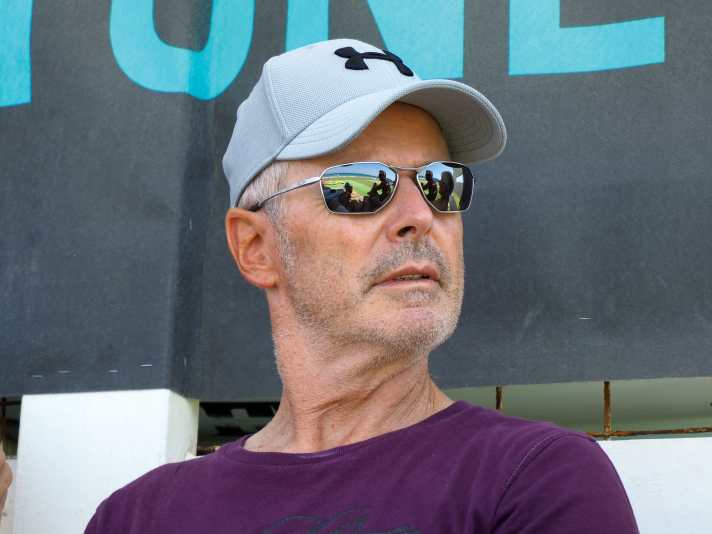
"The video recordings with the drone and the subsequent analyses really helped. The processes finally became more understandable and natural." Markus Gilhofer
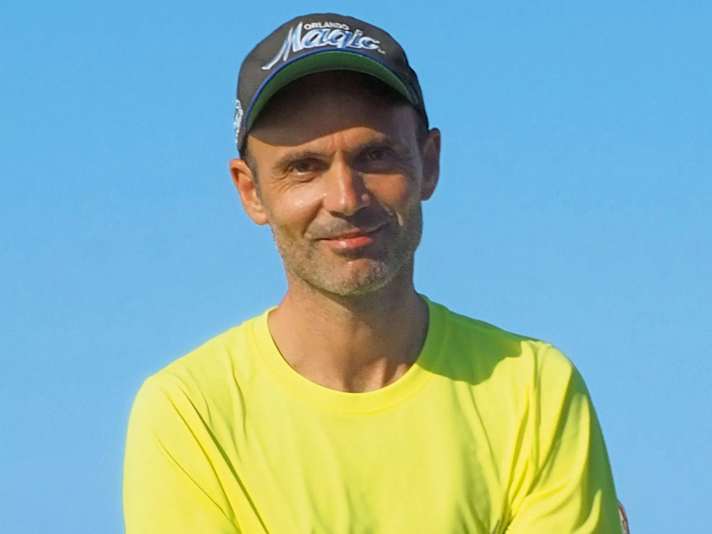
"Although I've been surfing since 1984, the subject of power jibes is a never-ending story. The mix of theory, filming with the drone and his simulator have meant that I've done a few jibes while planing." Uwe Meyer
